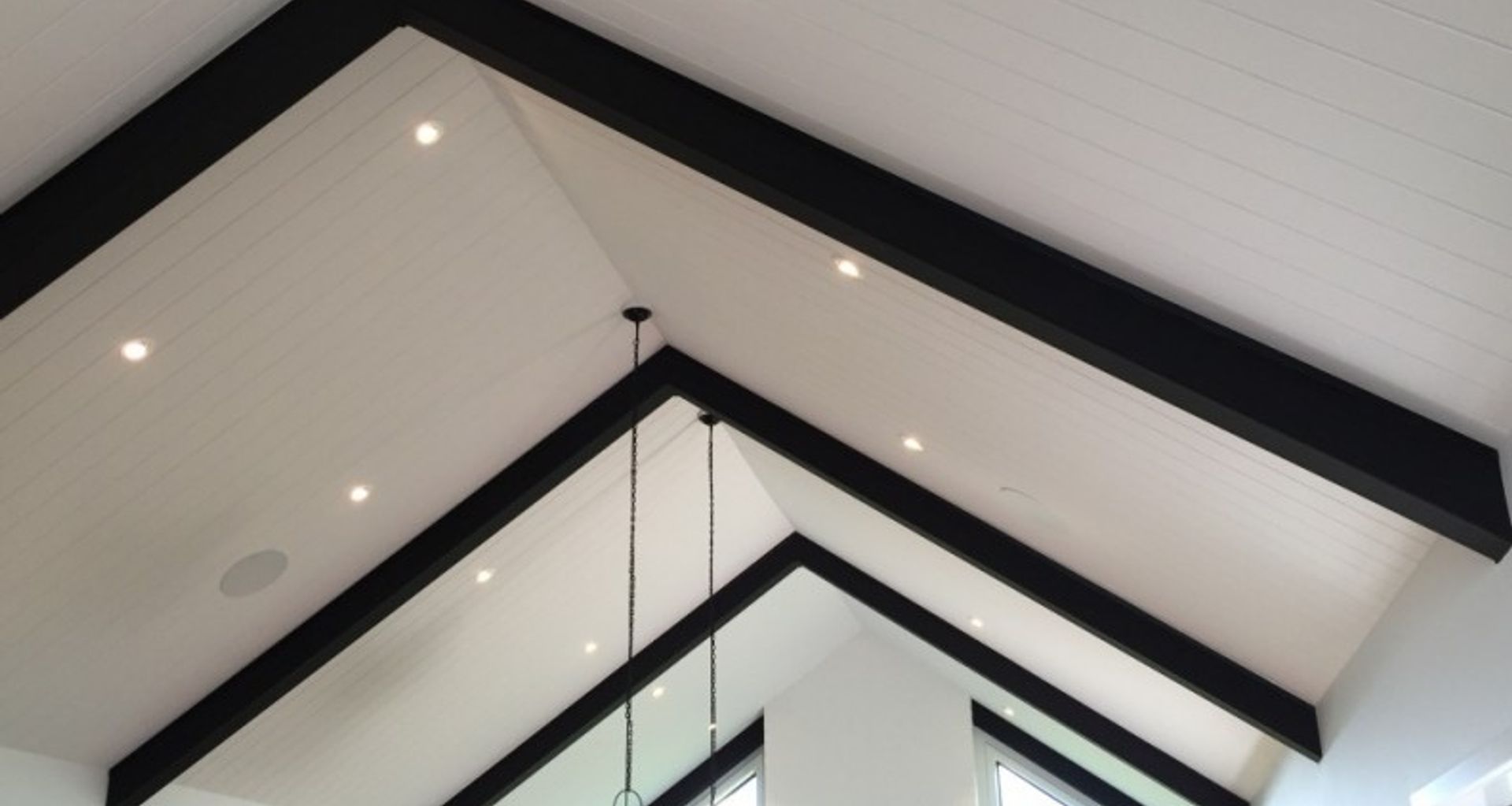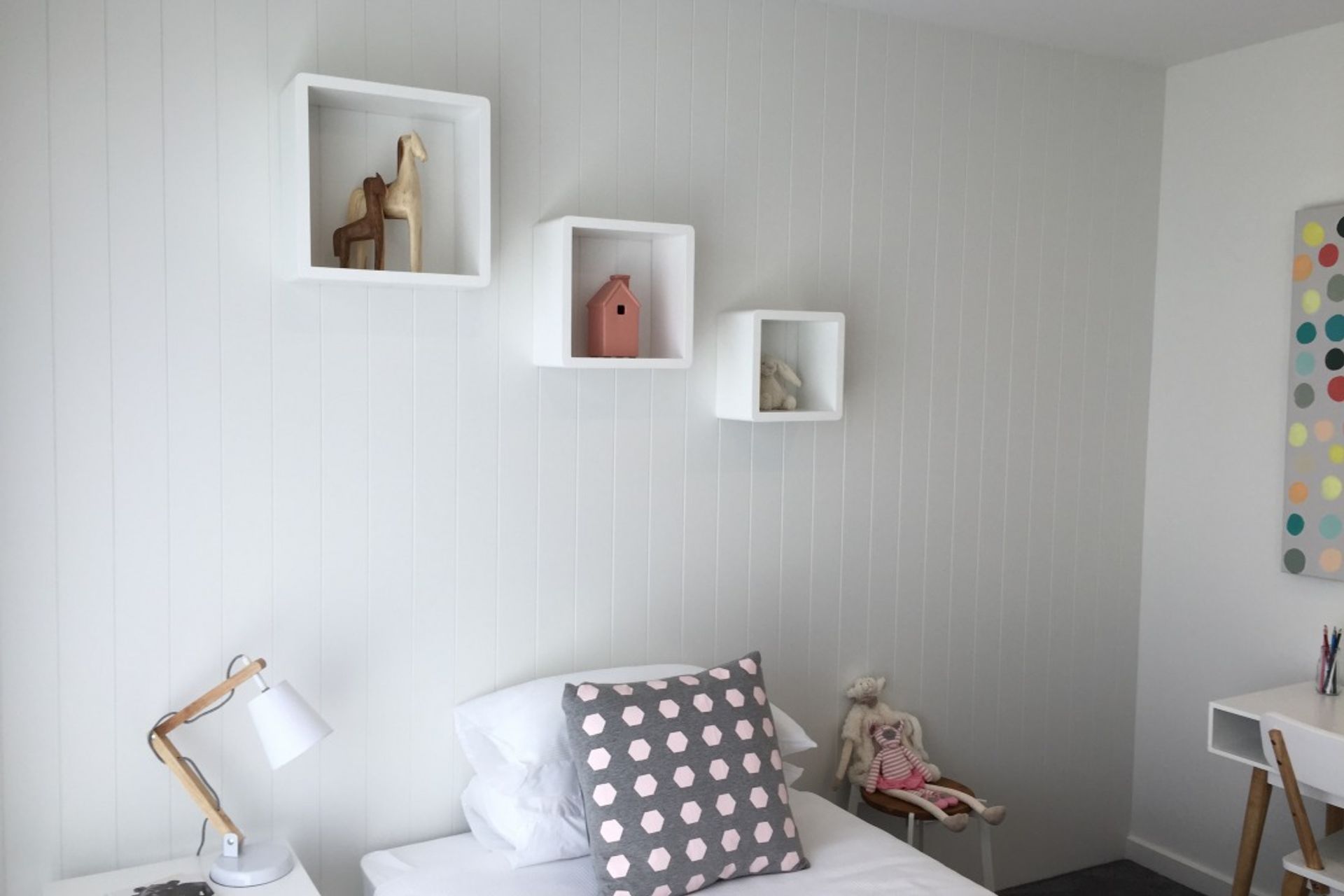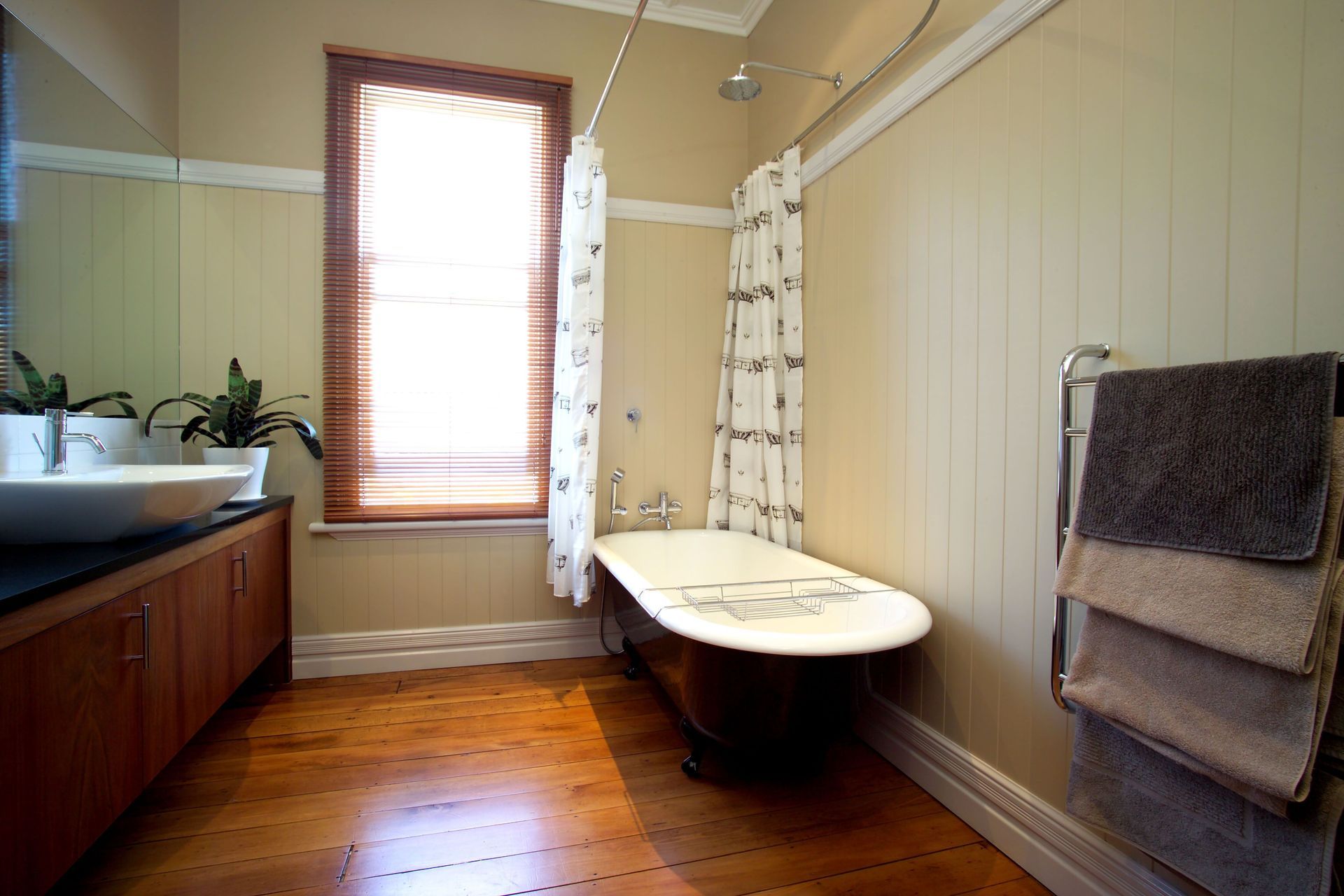The grooved interior: fibre cement features
Written by
04 September 2017
•
2 min read

Interior feature walls are often created using only colour, but that’s changing, and with it so are the materials being used. In particular, interesting visual aspects are becoming more popular, and that’s where James Hardie’s Jerry Friar says the market is moving.
James Hardie recently expanded its HardieGroove Lining range of grooved fibre cement to incorporate 3000mm lengths – previously the range extended to 2700mm lengths. “Stud heights are increasing and we are also seeing more vaulted ceilings so there’s demand for options.” Jerry says.
The 100mm spaced V-grooves allows designers to create a cost effective visual element as a feature wall, in either a contemporary or very traditional manner.
“In regard to the traditional aspect HardieGroove Lining can create, we often see it specified for older homes – Villas, Bungalows and Farmhouse-style properties – and used in conjunction with wide skirting’s and dado rails.”
In contemporary settings, it is used more often as a feature wall or ceiling for the added visual interest that a grooved lining provides.
It is fibre cement’s inherent strength, durability, resistance to fire and moisture damage that makes it ideal as an exterior cladding, and it is those same properties that make HardieGroove a perfect interior lining option.
HardieGroove Lining is suitable for dry and semi-wet internal areas of a home, and it’s especially good for areas like laundries and kitchens because of its moisture resistance.
“Although HardieGroove isn’t suitable for use in showers, it’s a cost effective and simple-to-install option in semi-wet areas of the bathroom, especially compared to traditional materials such as tiles.”
HardieGroove Lining is installed with both adhesive and brad nails and it doesn’t require plastering.
“It’s also particularly popular for family homes where young children are part of the mix. Because of its impact resistance, it’s ideal in hard-working areas like hallways.”
HardieGroove Lining requires an appropriate paint system to be applied, which will differ depending on the area of the home in which it is being used.
Get in touch with James Hardie on ArchiPro here to find out how you can create a feature area or traditional visual appeal in your next project.


